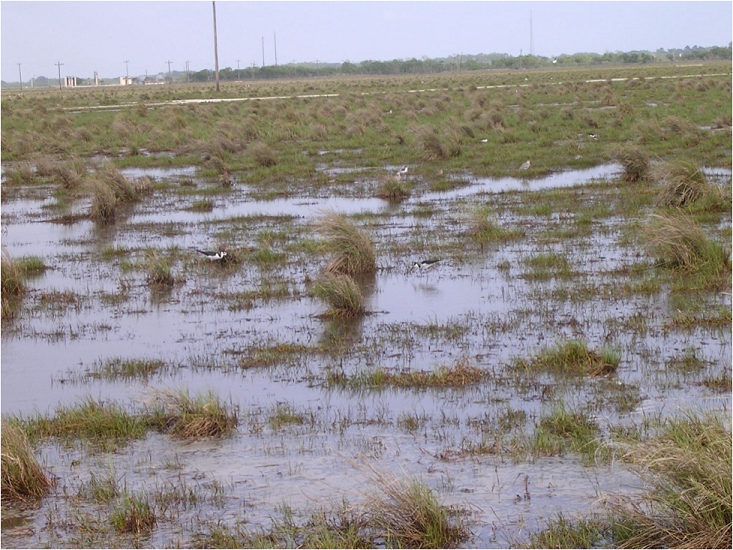Lead Exposure, Habitat Use, and Nesting Ecology of Black-necked Stilts (Himantopus mexicanus) on the Upper Texas Coast
 Investigators:
Investigators:
Thomas Riecke, M.S. Student, Stephen F. Austin State University
Project Supervisors:
Dr. Warren Conway
Dr. David Haukos
Funding:
Migratory Bird Office, Region 2, U.S. Fish and Wildlife Service
National Wildlife Refuges, Region 2, U.S. Fish and Wildlife Service
Stephen F. Austin State University
Cooperators:
Texas Chenier Plain NWR Complex
Dr. Dan Collins
Patrick Walther
Location:
Anahuac National Wildlife Refuge
Completion:
December 2013
Status:
Completed
Objectives:
(1) Measure lead exposure on black-necked stilts.
(2) Model the population effect of lead exposure on black-necked stilts.
(3) Determine effect of coastal marsh management practices on population demography of black-necked stilts.
Progress and Results:
The black-necked stilt has been studied extensively in the western United States, but its habitat requirements and breeding ecology are poorly delineated elsewhere. In western North America, black-necked stilts exist in dense populations, often clustered around salt evaporation ponds and managed wetlands, while black-necked stilts in the Southeast are putatively more broadly distributed in coastal marsh habitats. These regional habitat differences may promote variation in metapopulation structure, nest-site selection, reproductive success, and habitat and space use, none of which are well described in coastal Texas. Moreover, historic waterfowl harvest sites along the Texas coast have extensive lead deposition from spent shot. Although lead shot ingestion has been documented in black-necked stilts no data exist on blood lead concentrations or potential effects on survival, nest success, and other vital. This research has been designed to quantify black-necked stilt blood lead levels, habitat use, nest-site selection, and nest success on the upper Texas coast.
Products:
Thesis:
Riecke, T.V. (M.S. 2013) Lead exposure and nesting ecology of black-necked stilts on the Upper Texas Coast. Master's Thesis, Stephen F. Austin State University
Publications:
Riecke, T.V., W. C. Conway, C.E. Comer, D.A. Haukos, and J.A. Moon. 2014. Red imported fire ants Solenopsis invicta cause black-necked stilt Himantopus mexicanus nest abandonment. Wader Study Group Bulletin 121:52-53.
Riecke, T.V., W.C. Conway, D.A. Haukos, J.A. Moon, and C.E. Comer. 2015. Baseline blood Pb levels of black-necked stilts on the upper Texas coast. Bulletin of Environmental Contamination. 95:465-469.
Professional Presentations:
Riecke, T.V., J.A. Moon, D.A. Haukos, J.S. Sedinger, W.C. Conway, and P.S. Walther. 2015. An integrated population model for mottled ducks in Texas: harvest, habitat, and survival. Annual meeting of the Western Section of the Wildlife Society, Santa Rosa, CA.
Riecke, T., W. Conway, C. Comer, and J. Moon. 2013. Causes of black-necked stilt nest failure at Anahuac National Wildlife Refuge. Annual Meeting of The Texas Chapter of The Wildlife Society, Houston, Texas.
Riecke, T., W. Conway, C. Comer, and J. Moon. 2013. Blood lead levels of black-necked stilts on the Texas Chenier Plain National Wildlife Refuge Complex. Annual Meeting of The Texas Chapter of The Wildlife Society, Houston, Texas.
Riecke, T.V., W. Conway, and D.A. Haukos. 2012. Nest success and nest site selection of black-necked stilts on the Texas Chenier Plain National Wildlife Refuge Complex. 48th Annual Meeting, Texas Chapter of The Wildlife Society, Fort Worth, Texas.